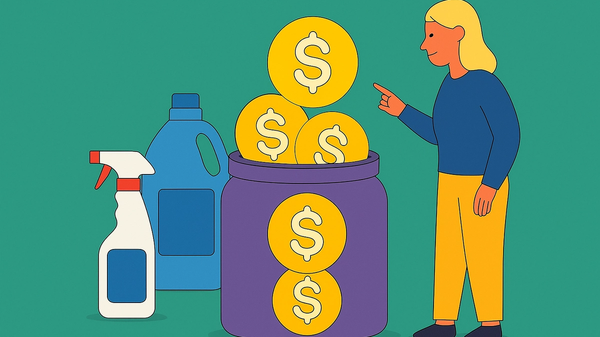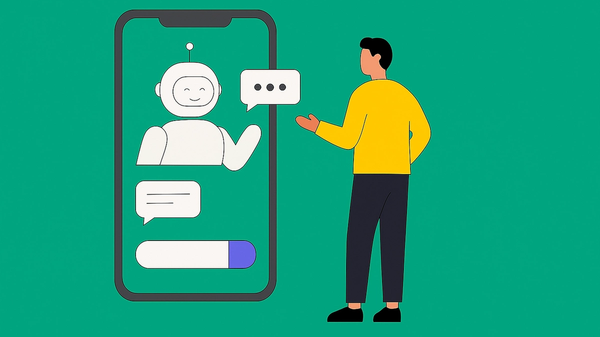Highlights:
- You don’t need to be rich to start investing. How to get started with just $100
- How everyday people are building wealth for retirement (even becoming millionaires)
- The 7 steps to start investing for retirement
Disclaimer: The information provided is for educational purposes only and should not be considered as investment advice. Always conduct your own research before making any investment decisions.
If you’ve been looking for a reliable way to save and grow your money for retirement, this is for you - even if you have no idea where to start.
Good news is, you don’t need to be a stock-picking genius, keep up with financial news, or follow “hot stock tips” from social!
Passive investing is a simple, proven approach that lets your money grow steadily over time with very little effort.
This guide walks you through what passive investing is, how it works, and how to get started - even if you’re brand-new to investing and have never invested a dollar before.
Let’s dive into this simple, low-stress way to build wealth over time!
What’s the difference between saving and investing?
Good question! They might seem similar on the surface, but they serve very different purposes.
Saving is for short-term goals, like buying a car in a few years, a house, or going on vacation.
You want the money to be there when you need it, so you keep it in a high-interest savings account or GIC.
Investing is for long-term goals like retirement. Investing helps grow your money faster than saving ever could.
You do this by putting your money in the stock market - where the returns are higher, but also come with short-term ups and downs.
What is passive investing?
Passive investing is a "set it and forget it" approach to growing your wealth.
Anyone can do this - you don’t need to be an expert, watch the market, or try and pick winning stocks (whew!)
With passive investing, you put your money into just a few funds that hold hundreds of different companies. That way, if 1 company isn’t doing well, the others help balance it out.
Over time, companies that are winning tend to pull the whole market upward, even if some companies lag behind.
That’s why the market usually goes up in the long run - and why your money grows over time.
There are so many great tools out there, you can easily do this yourself.
Why people love passive investing
- It works: Over time, the stock market has gone up. If you stay in long enough, you benefit from that growth
- It’s low-effort: You don’t need to study companies or predict what will happen next
- It’s low-cost: You avoid high management fees and advisors that eat into your profits, and you can start with just $100 (or less!)
- It’s less risky than picking individual stocks: You’re diversified, meaning your money is spread across hundreds or thousands of companies
Can I really do this without an advisor?
Yes you can - and in most cases, you’re better off without one.
Many financial advisors and brokers recommend expensive mutual funds that charge high fees every year.
Those fees quietly eat into your returns and can cost you hundreds of thousands of dollars over time.
Instead, you’ll use index funds that have outperformed managed funds 80% of the time.
Even people who “aren’t good with money” are successfully growing their retirement investments themselves with passive investing.
And if you ever want expert help, you can always book a fee-only advisor for a one-time check-in, so you get guidance without ongoing fees.
The simple path to becoming a millionaire
Passive investing is one of the simplest ways to grow real wealth.
People who start early have an advantage since their money has more time to grow, but everyone’s situation is different.
As long as you’ve still got a few decades before retirement, there’s time to grow your investments and build a more comfortable future.
How Jason hit $1 million by retirement
Starting at 25 years old, he invests $350 a month and earns an average 8% return per year.
By 65, Jason reaches his goal: $1,000,000.
He didn’t do anything fancy - just stayed consistent and patient.
How Maya built a $1,000,000 retirement fund
Maya didn’t start investing until 35. Life was busy, and she didn’t really know about investing before.
To catch up, she invests $800 a month and earns that same 8% return.
By 65, she also ends up with around $1,000,000 - it just took more each month to get there.
What do I actually invest in?
Instead of stocks or mutual funds, use funds called ETFs (Exchange-Traded Funds).
These funds are basically a ‘basket’ of stocks - there can be hundreds of stocks in just one ETF.
This makes it easy! With just a few funds, you’ll own a little bit of everything.
Click here to learn more about ETFs!
Which funds should I choose?
Even though there are many ETFs out there, in reality there are only 3-5 kinds that most investors need.
Investing can be as simple as following a recipe.
This article gives different ‘investing recipes’ so you can find one that fits your goals.
How long should I invest for?
The longer the better! Ideally, 20 to 30 years or more.
That’s because time is your biggest advantage.
The longer you stay invested, the more time you give the market to recover from the dips and take advantage of the gains.
With passive investing you don’t “buy low, sell high”. Just invest consistently into solid funds and keep them so they grow over time.
Long-term investing means more compound interest
Einstein once said, "Compound interest is the eighth wonder of the world.”
And for good reason! This is what makes long-term investing so powerful:
Compound interest is when you earn money on both your original investment, and on the money it’s already made.
Your money literally starts earning money!
It’s like a snowball rolling down a hill: it gets bigger the longer it rolls.
The longer you stay invested, the bigger your ‘money snowball’ can get.
That’s why time in the market is more important than timing the market.
Even small amounts grow if given enough time.
That’s the real ‘magic’ behind long-term investing - your money starts doing the work for you.
How often should I invest?
The second ‘key’ to successful passive investing is investing consistently.
Set up an automatic transfer into your investments every payday, and you’ll be good to go!
This way, you’ll invest the same amount on a regular schedule, no matter what the market is doing.
Sometimes you’ll buy when prices are high, sometimes when they’re low. Over time it evens out, and you avoid the stress of trying to time the market perfectly.
This strategy is called dollar cost averaging, and it’s a simple way to build wealth without overthinking it - just keep investing, and let the market do the rest.
What if the market goes down?
It will. That’s part of investing, and it’s totally normal. It can actually be a good thing!
The stock market doesn’t go up in a straight line. Sometimes it’s up, sometimes it’s down.
The important thing is that it has always recovered, and kept going up.
Downturns can be a great opportunity. When the market drops, you can buy investments at a discount. It’s like they’re on sale.
When a downturn happens, don’t sell. Just stay invested - even better, keep investing!
How do I start investing?
Here are the steps to get started with investing for retirement!
1: Open a brokerage account
A brokerage account is what you use to buy and hold your investments - kind of like a bank account, but for investing. You can open one online in about 10–20 minutes.
You can use:
2: Set up your accounts
Once you have a brokerage account, the next step is to choose the right type of account for your retirement investments.
There are a few accounts in Canada that offer tax benefits, so most investors start with a TFSA or RRSP.
Since these accounts are registered with the government, it can take a few days after setting up your account before they’re ready to use.
TFSA (Tax-Free Savings Account): Great for long-term investing because all the growth is tax-free.
RRSP (Registered Retirement Savings Plan): Gives you a tax break now (you can deduct contributions from your income), but you'll pay tax when you take the money out in retirement - ideally when your income is lower.
3: Choose your investments
Now’s the time to look at the investing recipes and find one that suits your style and goals.
Whether you’re more cautious or more growth-focused, you’ll find a recipe that fits.
If you like to play it safe, you might choose a more balanced mix that is more stable.
If you’re ok with a bit of risk in exchange for more growth, you can pick a mix that grows faster - but will have more ups and downs.
You’ll use the ‘recipe’ you choose in the next step.
Image for educational purposes only, this is not specific financial advice
4: Set up Passiv
Make investing even easier with Passiv.
It connects to your brokerage and keeps your portfolio balanced.
Use your investing recipe to set up a model portfolio in Passiv, which tells the system how much of each fund to hold.
Every time you add money, Passiv shows exactly what to buy to stay on track - and can even place all your trades in 1 click!
Click here to set up your Passiv account!
5: Fund your account
Now it’s time to send money to your brokerage account so you can invest!
The simplest way is usually an e-transfer from your bank, similar to sending money to a friend.
Click below to see how:
6: Buy your investments
Once the money has arrived in your brokerage account, it’s time to invest!
Log into Passiv and you’ll see what to buy to match your investing plan so you know how much of each fund to buy.
Or if you have Passiv Elite, you can place all your trades automatically with 1 click!
7: Automate and chill
By now you’ll have made your first investment. Yay!
But as we learned, investing for retirement is about consistency. The easiest way to do that is to automate your investments!
Set up an automatic deposit from your bank to your investing account every payday.
Once it’s set up, you don’t have to think about it.
Your money shows up, Passiv says what to buy, and you invest.
Now you’re building wealth for retirement with a simple plan you can follow long-term!


